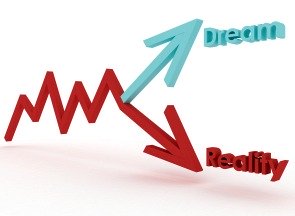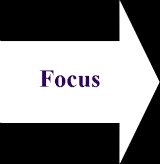Home Page | Blog | Managing | Marketing | Planning | Strategy | Sales | Service | Networking | Voice Marketing Inc.
Writing a Sales Plan:
Use Sales Forecast Software or
a Sales Forecast Example for Predictive Modeling
Writing a sales plan that is effective and well built results in a stronger focus on goals. Use sales forecast software to develop, and test, your plan and to build a strong selling structure. When the planning is complete, make sure that the key elements for success are in place (a product or service that the market wants and needs; pricing that is relevant for your target market; a promotional program that includes a strong sales foundation (including compensation details such as sales commission structure), and distribution or selling channel).
Search This Site

Use Sales Forecasting Software to Develop Your Plan:
Sales forecasting is an important business activity.
Forecasting is required not only for sales, but also to forecast the number of customers you need to achieve those sales; the type of products or services you plan to sell; and the number of staff you need to support your sales forecast (and in the case of manufacturing, to operate production equipment).
Forecasting is also required to plan for capital expenditures required for new or replacement equipment to support and achieve the plan.
A sales forecast is necessary for cash flow projections (cash will be needed during sales growth periods; your supplies expenses will go up, your labor costs will go up, etc.).
Sales and operations planning go hand-in-hand: you need a sales forecast to build your operations plan; you need a business operations plan to support your sales planning. And both of those plans drive the business financial plan; which needs the information in those plans to forecast financial needs and outcomes.
And all these plans together form the basis of your overall business plan.
Writing a Sales Plan
The first step in building your small business sales forecast is to determine the period your sales forecast will cover: 1, 2, 3, 4 or 5 years.

Typically, from a business management perspective, you would want your sales forecast to look-out at the next two years. That gives you a near-term view of what you want to achieve. You can use a sales forecast example or sales forecast software to run some predictive models.
Set up internal reporting and business performance measures to compare your actual sales (by product, by customer, by month, by sales representative, by geographic location, etc.) to your planned sales - focus on the strengths and weaknesses of your sales results.
When you are looking at significant business events, such as expanding your business; new products or services; a new location (to name just a few), you need to prepare a 5 year sales program (again, sales forecast software can help you prepare more accurate predictive models).
Longer term sales planning will force you to look at the longer term benefits/costs. (You will also need to do a human resources plan, financial and operations plans, and more depending on the business event you are undertaking.
Recognize that the further out your planning horizon goes, the less likely it is to be accurate. However, you will still need to do longer term plans in order to predict your necessary capital expenditures, your financing and cash flow needs, your staffing needs and more.
After you have determined the forecast period, the next step is to define the sales assumptions that you are using to build your forecast. Note: each year is likely to have some variation.
Sales Plan Assumption Examples:
US/Canada dollar exchange rate: remains at par.
Inflation rate is 3% for each year of the plan period.
Market will grow at the same rate as GDP: 3.3% (this works if the industry typically tracks GDP).
Market will grow due to an explained event (e.g. Olympics, US election year, etc.)
Market will shrink due to a disaster (unplanned event): this is an interesting one; how do you plan for an unplanned event. Well, if you live in an area that is hit every year by hurricanes, you need to organize for an impact during hurricane season.
Market will shrink due to new competitors entering your market.
Market will shrink due to new competitive products being introduced and impacting your market share.
Market will grow due to competitors leaving the market (e.g. business closing, bankruptcies, mergers and acquisitions, etc.).
To support the rapid sales growth planned, you will need to add 25% to your sales staff and to your customer service support.
To support the rapid sales growth planned, you will need to add plant floor staff to produce the increase in goods for sale.
To support the rapid sales growth planned, you will re-work the sales commission structure for new accounts; budget the change in commission payouts.
If your plan shows shrinkage in the market size, you may decide to reduce your marketing and advertising budget or conversely increase it to gain market share. In either scenario, state your assumption.
To support your rapid sales growth, you will need to move to a larger location. Define this assumption.
You will increase your prices at the rate of inflation plus 2%. (This may have an impact on sales growth and on net revenue.)
Define where your products/services are in their product life cycle. If they are in the growth stage, your assumption will be rapid sales growth. If in the mature or declining stage, assume that sales will track those stages.
What does your market research tell you: size of market, your market share, how much can you increase your share (if you are already at 80% market share it will be hard to grow with that product/service; and some new products or services).
If you have actual (historical) sales information (e.g. you've been operating your business for the past 8 years and your sales growth has been about 2% per year or up and down) state the pattern as an assumption or state why that pattern won't continue in the upcoming plan; you've added or lost a significant customer for example.

At the end of the assumptions section of your sales forecast or plan, ensure that the assumptions you've made in the plan are 'transported' or transferred to the operations plan and the financial plans (e.g. advertising cost increases or decreases; staff increases or decreases; moving locations; expanding your geographic market, which means additional transportation costs and time-to-market costs; etc.).
After you've defined your assumptions (and some of these will come to you as you write your plan), set up your plan. Try to drill down to the product or service level by geographic market and perhaps by month as well as year.
If geography is important, develop a sales territory planning section to address products, sales representative assignments, and customers; look for best fits in your plan.
When writing a sales plan you will need to test your sales forecast numbers. Make sure that you compare your plan to your existing sales (if you have them) and if you're a new business, or launching a new product or service, or selling in a new location, do your market research first.
More-For-Small-Business Newsletter:
For more timely and regular monthly information on managing your
small business,
please subscribe here.
Additional Reading:
Return from Sales Plan to Small Business Plan.
Incorporate your sales plan into a strategic yet simple business plan.
If you plan to increase your sales significantly, ensure that you can support those efforts with your capital expenditures.
Or return to More For Small Business Home Page.
Subscribe to
More Business Resources E-zine
Implement Your Plan: for Results

Once you've built your plan, you need to implement it.
Developing your strategy (in the plan) is the first, necessary, step. You need to know the direction you want to go, and you need the strategy and the plan to help you get there.
But once you've built the plan, you must execute it.
There is no value in building a plan that just gathers dust.
When building your business plan, make sure that you include an action plan for the strategies, techniques and tactics.
The actions need to include who's responsible for doing what; measurements for success (such as deadlines and timelines, targets and goals, costs, etc.); and why you need to take the action (in some cases, one action needs to be accomplished before subsequent ones can be launched).
As you work through the plan, make sure that you build reporting periods into the implementation: you need to know what's going on and why something is working, or not.
Make sure to communicate progress, or lack of it, throughout the organization. And re-visit the plan when and where necessary.
This Site
Focus on Your Plan

Plan for the future: lots of business owners want to get, or keep, moving forward. Planning seems to be more of a passive activity.
However, to ensure that your business goes in the right direction and that it optimizes all its opportunities, and manages its challenges, it is important to plan.
Balance your activities against the plan: make sure that you are investing your time, and money, on the elements of your business that will help you succeed.
Measure what works, and what doesn't work, and keep your focus: use your business plan as a map to guide you in the direction you want to go.







